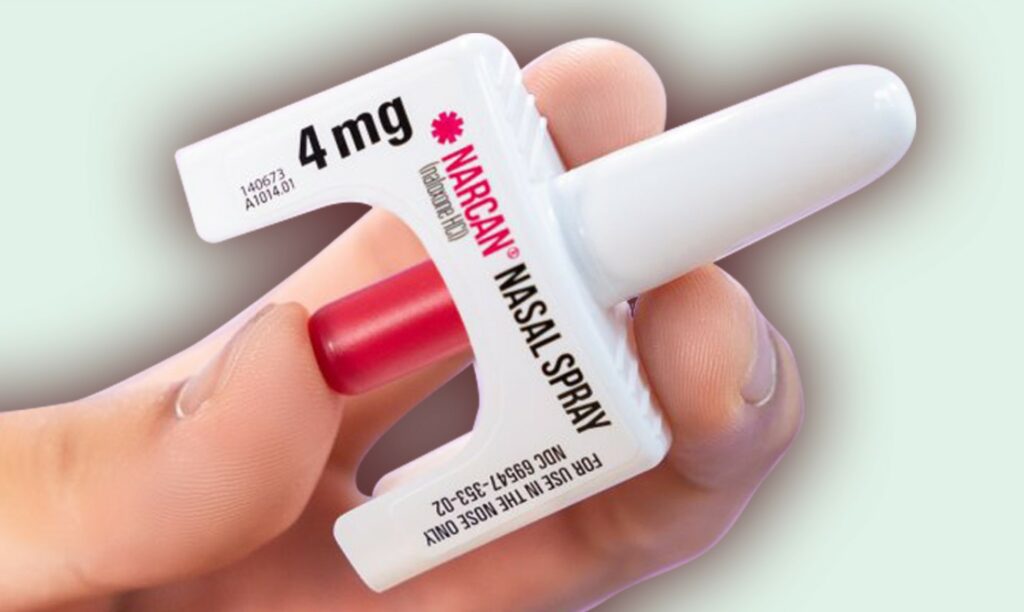Fentanyl
What is fentanyl?
Fentanyl is a synthetic opioid that is 80 to 100 times more potent than morphine and 50 times more potent than heroin. This potency increases the risk of fatal overdose. Like all opioids, fentanyl influences the parts of the brain that address pain. At higher doses, it can produce a sense of pleasure or euphoria.
There are two types of fentanyl:
- Pharmaceutical fentanyl is used for surgeries or prescribed to help with severe pain that cannot be addressed with other pain management techniques. Its production is highly controlled and it is used safely with specific doses and for specific purposes in medical settings.
- Illicit fentanyl is made illegally and is not produced with the same care or safety considerations. Contaminants and an uneven distribution of fentanyl into pills and powders make them very dangerous. The risk of overdose is high, even for people who have used fentanyl or other opioids before.
The information on this webpage is focused on illicit fentanyl. You should consider any fentanyl not given to you directly by a professional in a medical setting to be illicit fentanyl.
What does fentanyl look like?
In Snohomish County, illicit fentanyl is most commonly found as a powder or as fake pills that look like real medication. Blue M30’s (pictured below) are most common, but fentanyl can be pressed into pills that look like other prescription medications, too. Fentanyl cannot be identified by look, smell, or taste. The only way to know that the medication you receive is authentic is to receive it as prescribed by a doctor or pharmacist or to have the pills tested.

How is fentanyl used?
Illicit fentanyl is most frequently smoked, but it can also be snorted, swallowed, or injected. Fentanyl is potentially deadly when consumed directly. Inhaling vapor through a pipe, straw, or other mechanism right above the heated substance or swallowing a pill containing fentanyl are both direct and dangerous ways to consume it.
For current trends on routes of administration please view the Snohomish Opioid Overdose and Prevention Data Dashboard.
Why is fentanyl so dangerous?
There is no regulation for illicit substances, which means the strength (or potency) and quantity of fentanyl varies significantly. When fentanyl is sold as pills or powder, it is not evenly distributed. Without testing it, there is no way to know how much fentanyl is in one pill. Fentanyl also can be found in other non-opioid substances such as cocaine and methamphetamine.
Fentanyl test strips exist. However, they only test for the presence of fentanyl and don’t provide information regarding the quantity or purity of the fentanyl. Some harm reduction programs provide fentanyl test strips. Please visit the Washington State Department of Health directory for a list of harm reduction programs and the services they offer.
Is secondhand exposure dangerous?
While the risk of overdose is high for the person using fentanyl, the risk of overdose from indirect exposure is low. People can be exposed indirectly by breathing in secondhand smoke or touching fentanyl or residue with their skin. For more information, please view this fentanyl exposure question-and-answer document from StopOverdose.org.
Fentanyl and other dangerous substances should always be kept secure and out of the reach of children or pets. While risk of overdose from incidental secondhand exposure is low, children may put the substance in their mouth, touch it and put their fingers in their mouth, or breathe in too much of it if they are in an enclosed space where it is being smoked.
If you are concerned about fentanyl exposure, you can also contact the Washington Poison Center by calling 1-800-222-1222.
How do I respond to a fentanyl overdose?
Signs of a fentanyl overdose are the same as signs of other opioid overdoses. However, fentanyl is a highly potent, unregulated drug that frequently contaminates (or is used with) other substances. Because of this, the window to reverse an overdose and prevent death may be shorter.
Naloxone (brand name Narcan) is a medication that should be given immediately to reverse the effects of an opioid overdose and restore breathing. Naloxone’s only purpose is to reverse overdose effects. It will not harm someone if they are not overdosing. If someone is overdosing, they cannot use naloxone on themself because they will be unconscious by the time naloxone is needed. Another person must be around to recognize the signs of an opioid overdose and give a dose of naloxone.
For more information about responding to an overdose, visit our Preventing Deaths page or download one of our pocket resource guides or rack cards. You can also watch this video on how to administer naloxone.
More about fentanyl
- “What’s up with fentanyl” (English)
- ¿Qué se sabe sobre el fentanilo? (Spanish)
How do I stop using fentanyl?
Opioid use disorder is a treatable medical condition. People can and do recover from fentanyl use. Below is additional information on getting help with opioid use disorder:

